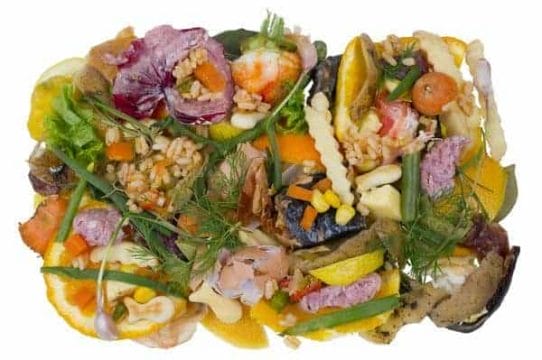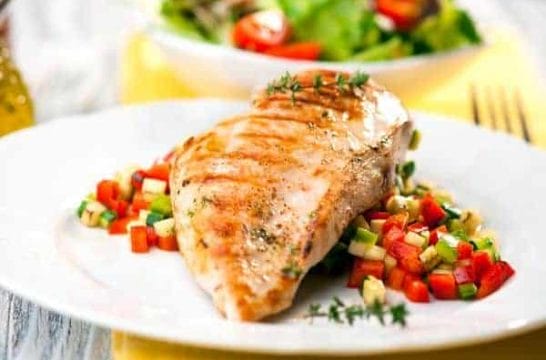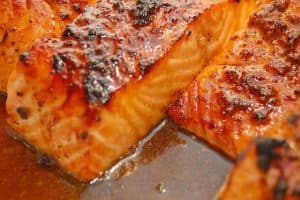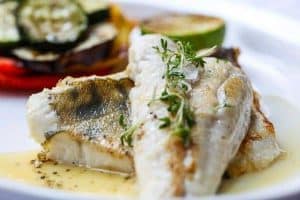A proper diet, described in my previous post about dieting for men, should apply to every man, who wants to maintain full health and vitality until old age. Such a diet works perfectly in most cases, according to the principles of nutrition adopted for the lifestyle, stationary or active, but completely different rules will apply to men, who care not so much about losing weight or maintaining a constant weight, but rather about building muscle mass. There’s no denying that a well-built guy, with clearly visible muscles under the skin arouses admiration and envy not only of the opposite sex. Unfortunately it’s a long way to get there, and muscles need a proper foundation for proper growth, which means gaining weight, and of course we’re not talking about being overweight or obese. The body simply needs strength to withstand a strict training regime, which you will have to impose on yourself, which will be helped by providing it with the right amount and quality of nutrients along with food.
Table of contents
- 1 Diet for muscle mass – what it is and where to start
- 2 Diet for mass – how to compose our daily menu and what to avoid in it
- 3 Diet for mass – products that help build it
- 4 Mass gain diet – a sample menu
- 5 Weight gain diet – the way you eat matters too
- 6 Fish in a diet for mass – why should you eat them?
- 7 Fish dishes for weight – recipes
Diet for muscle mass – what it is and where to start
Deciding on practicing strength sports or just a gentle improvement of your muscles, although these two things usually go hand in hand, it is worth at the outset to clearly define what a diet for mass really is. Every athlete, not only bodybuilder, is obliged to have a special diet, which planning should be done by a nutritionist, preferably in consultation with a doctor and trainer, who on the basis of assumptions received will create an appropriate plan of exercise. However, most beginners in this sport think that it is enough to eat more, but the wrong choice of products included in the daily menu, often lacking the right amount of vitamins or minerals, gives the opposite effect. Yes, the body increases body weight, but the simultaneous increase in body fat is usually so large that it ends up in overweight or obesity, and it will take a very long time to burn off so many fat cells.
Defining the term mass diet in the clearest way, we can say that it is a diet designed to bring a carefully calculated positive caloric surplus, consisting only of the most nutritious foods. Absolutely forbidden in it is all kind of “junk” food, which we often stuff ourselves with every day, hamburgers, pizza, or so popular chips and other sweet snacks eaten in front of the TV. All this must immediately land in the trash bin replaced by the products presented below. Calorie surplus itself is calculated in a very simple way using practical calculators available on many bodybuilding websites. For example, if our calculated daily demand is 3200 kcal, we increase this amount by about 10 – 15 percent, so we should provide 3500 to 3650 kcal with meals daily. Of course these rates are individual for each body, that is why it is so important, at least in the initial phase of both the diet and the subsequent training for mass, to use the help of professionals in this field.
When planning the menu, we must take into account several extremely important factors, and one of them, often overlooked, is for example the type of our figure, the type of physique we represent, and the three most common groups are:
- people with a slim, slender, even skinny figure, about whom it is commonly said that they have long bones, having great difficulty in gaining the so-called body fat, which is usually associated with an extremely rapid metabolism;
- more bulky people, characterized by, among others, wide shoulders and hips, who unfortunately tend to gain weight and excess fat is visibly accumulated in various parts of the body;
- people with a naturally developed musculature, unfortunately rare, who exercise regularly and keep to a diet basically only to maintain the existing state of affairs permanently and not to allow excess fat tissue to accumulate.

The type of figure has a direct impact not only on the diet itself, but also on the later strength training, the type of exercises that we will be able to do without risking damage to our health. We also already know, at least roughly, what must disappear from our fridge, but to the above-mentioned products it is worth adding a few more, and in the diet for mass you should definitely avoid:
- pork, meat itself, which is unfortunately very fatty, as well as sausages made of it or other cheap, highly processed sausages with ingredients of unknown origin;
- all tinned meat due to its composition full of artificial preservatives;
- sweets and other products containing large amounts of sugar, e.g. cakes or yoghurts;
- White wheat bread;
- saturated animal fats, margarine spreads, refined oil.
Diet for mass – products that help build it
Initially it will be difficult to give up eating these types of products, but with time and a little strong will, they can certainly be replaced by others, full of essential nutrients. A dietician or even an experienced trainer at the gym can give us valuable advice, and what we eat while building muscle mass can be divided into several groups in terms of the content of specific nutrients, and the menu must include
- complete proteins, which are one of the most important building blocks of muscle tissue, and without them it is impossible for it to grow quickly and properly. It can be supplied to the body in different ways, but in this case it should come primarily from eggs. They contain not only large amounts of protein, meeting almost all of the body’s needs in this respect, but also the valuable vitamin B12, which not only burns fat more efficiently, but also increases muscle tone. In each egg you will also find vitamin B6, D, E, minerals, iron and phosphorus, and as recent studies show, eating even a few eggs a day will not significantly increase the level of cholesterol. Another, equally valuable source of protein is fish, especially sea species, headed by tuna. It can be eaten in the most easily available processed form, tinned fish, of course only those in their own sauce and not in harmful oil. Of course, fresh meat from this fish would be better, but in both cases we will provide the body not only with healthy protein, giving it proteins, but also extremely healthy fatty acids Omega – 3 necessary for strength training, helping to prevent muscle micro-damage. It’s also a good idea to introduce beef to your diet, as it contains the highest amounts of creatine, giving you the strength to train intensely, as well as iron and selenium, elements that allow you to build muscle mass effectively. The daily menu must also include dairy products made from skim milk, cottage cheese, low-fat cheese and natural yoghurt without artificial sweeteners and preservatives. We will find in it a perfectly composed combination of carbohydrates and protein, thanks to which we can count on rapid growth of muscle tissue;
- carbohydrates, which can be divided into simple and complex sugars. Both provide the body with the energy necessary for physical activity, with the difference that the energy coming from the first is used up in a very short time. Another disadvantage is the high glycemic index, the cause of high blood glucose levels, and simple sugars also cause faster accumulation of fat cells. Therefore, it is more important to introduce complex sugars into the diet, giving larger amounts of energy that can be used for a longer period of time and not raising glucose levels, which could pose a health risk. Among the best products that provide the right amount of carbohydrates, it is worth mentioning rice, white or brown, which can be safely considered a staple food for every bodybuilding enthusiast. It does not contain harmful gluten, but in turn has large amounts of iron, potassium, zinc and magnesium in its composition, and is also a valuable source of glycogen, essential during strength training. The diet should also include cereals and oat bran, containing fibre which regulates digestive processes, and wholemeal pasta, millet and dark wholemeal bread are equally effective. An important source of carbohydrates is of course fruit, which should be eaten several times a day, replacing all unhealthy and fattening chips, nuts or cookies. Among the fruits that have a beneficial effect on building mass we should first of all distinguish bananas, containing vitamin B2, C, E, easily digestible dietary fiber and a whole range of minerals;
- fats, which, contrary to prevailing opinions, we can not completely eliminate from our diet, and their absence will quickly become the cause of dangerous diseases and dysfunction of many important organs and body systems. The most important task that fats have is to increase the absorption and assimilation of other valuable nutrients, especially vitamins. In a diet for mass, all saturated fatty acids of animal origin should be eliminated, causing an increase in cholesterol levels in the blood, and with it the risk of heart disease, atherosclerosis or blockages in the veins. So it is better to replace them with unsaturated fats, which can provide us with e.g. marine fish described above. Nuts and almonds are also a good source of them, and the latter will also provide us with large amounts of vitamin E, an antioxidant that protects our muscles and the whole body from the influence of dangerous free radicals. However, the most valuable for the safe growth of our mass is olive oil, a natural product, which should immediately replace all refined oils in the kitchen. You can eat it raw, as an addition to tasty salads, or fry poultry or fish fillets in it. We should always use extra virgin oil, which is by far the healthiest, rich in unsaturated fatty acids and vitamin E. Oil also has a research-proven anti-catabolic effect, preventing the breakdown of muscle tissue;
- water, the most underestimated element of a healthy diet, often replaced by artificially sweetened, carbonated drinks, not only causing overweight and obesity, but also having a negative impact on our overall health. Water, of course the mineral and non-carbonated one, has a significant influence on the mass development before the beginning of the workout, helping also in the later exercises. After all, our body consists of 75 percent water, and in the muscles alone its amount exceeds even 80 percent, which is why it is necessary to drink at least 2 litres a day. Drinking such amounts of fluids will first and foremost minimise the risk of dehydration, and moreover, protein synthesis occurs better in a properly hydrated body. On the other hand, in the absence of adequate amounts of water, fat burning processes slow down and by increasing blood density the oxygenation level in tissues decreases, including, of course, those forming muscles.

Now that we know which groups of products must be included in our diet, we are able to compose daily meals, breakfast, lunch and dinner on our own or with a little help from a specialist. A large number of ready-made recipes can be easily found on the Internet, mainly on sites dedicated to bodybuilding and healthy eating in general. Differentiating them due to individual meals, we can finally arrange our healthy menu, choosing from such sets as:
Breakfast:
- set 1: omelet or scrambled eggs from 3 -4 fresh eggs, fried in olive oil with herbs;
- set 2: sandwiches made of dark bread with hard-boiled eggs, lean chicken sausage, smoked fish, chives or parsley;
- Set 3: oatmeal or instant oatmeal with milk, graham bread with cottage cheese, tomato with chives;
- Set 4: dairy products, cheese or cottage cheese, wholemeal rye bread, chives, radishes and cucumber.
Second breakfast:
- set 1: loose cooked white or brown rice with fish, preferably tuna and extra virgin olive oil;
- set 2: wholemeal pasta with vegetables;
- set 3: wholemeal bread sandwiches with lean cold meat and tomato;
- set 4: cooked brown or white rice, chicken fillet or grilled fish, salad of fresh vegetables with olive oil.
Lunch:
- set 1: again brown rice stewed with beef or chicken, with a green salad to which you can add a tasty yogurt dressing with your favorite herbs;
- set 2: wholemeal pasta also with chicken breast, parsley, dill and olive oil;
- Set 3: buckwheat or buckwheat groats with beef or chicken, mixed with mushrooms, peppers and other vegetables, seasoned with herbs and olive oil;
- Set 4: fish grilled or baked in foil in the oven, topped with olive oil, served with roasted or boiled vegetables.
Dinner:
- set 1: cottage cheese with yogurt, radishes, chives and a slice of whole grain bread;
- Set 2: tuna salad with tomato, cucumber, lettuce leaves and olive oil dressing, to which you can add your favourite herbs;
- Set 3: oatmeal, mixed after cooking with natural yoghurt, dried fruit and almonds;
- set 4: millet groats with fruit, bananas and yoghurt sauce.
Weight gain diet – the way you eat matters too
These are of course only sample recipes, giving you general information on how to compose tasty and at the same time healthy meals. Learning how to prepare them properly can take some time, so to make it easier for yourself it is worth sticking to a few rules saying that the amount of nutrients should be distributed as follows:
- protein: 25%;
- fats: 25%;
- carbohydrates: 50%.
You can also adopt a weight principle here, choosing ingredients for each kilogram of body weight and in this case the distribution is as follows:
- proteins: 2 – 3 g;
- fats: 5 – 6 g;
- carbohydrates: 1 – 1.5 g.
Equally important is the consumption of individual meals, of which breakfast remains the most important, restoring energy in the morning and giving strength for the whole day’s activities. It must be the most valuable and nutritious meal, but let’s not neglect dinner either, which replenishes all the calories lost during the day before going to bed. Another important rule to follow is to eat at least 5-6 meals a day, with regular breaks of preferably 3 hours between them. At the beginning it will certainly not be easy to force yourself to do this, but here, as with any diet, iron consistency and self-denial are required, without which you will not be able to achieve the desired results. Fortunately the whole process can be accelerated by using supplements supporting muscle mass development, and the one most often recommended by dieticians and professional trainers is Mass Extreme.
Fish in a diet for mass – why should you eat them?

Marine fish are a rich treasury of wholesome proteinof excellent assimilability, but this is not the only reason why it is worth making them a frequent element of your menu. They are a source of vitamin D, which is very beneficial to the muscle tissue, and which can be found in a small number of food products.
They are also a source of selenium, which builds immunity, and iron, which strengthens the body. You can also find in them vitamin E and A, zinc, phosphorus, potassium, magnesium, manganese and iodine.
Marine fish are also rich in omega-3 fatty acids and calcium, which are important for the functioning of muscles and cannot be omitted in the diet of people working to develop muscles.
Which fish to choose? First of all, we should choose marine fish. These may be:
- leaner species, such as: cod, hake, pollock, flounder, sole, grenadier;
- slightly fattier species, such as: herring, sprat, salmon, tuna, mackerel, sardine.
If you buy fresh fish, check its color and smell (never buy old, stale fish!). Apart from fresh fish, we can also add frozen fish fillets, smoked fish and canned fish to the menu.
Fish dishes for weight – recipes
1. fish skewers
Ingredients:
- 3-4 thick cod or salmon fillets
- 10 mushrooms
- 2 onions
- red and yellow pepper
- oil
- spices: garlic, rosemary, thyme, basil, salt, pepper, lemon juice
Preparation:
Prepare a marinade of olive oil, lemon juice, pressed garlic, herbs, salt and pepper. Cut the fish into thick cubes and put into the previously prepared marinade. Put it in the fridge for an hour. Cut the pepper into cubes, leave the mushrooms whole or cut them in half. Cut the onion into thick slices. Thread the fish, peppers, mushrooms and onions alternately on skewer sticks. Sprinkle the skewers with herbs. Place in an ovenproof dish greased with olive oil and bake at 180 degrees for about 30 minutes.
2. easy fish soup with pieces of fish and vegetables
Ingredients:
- 1 kg of fish (e.g. pollock, cod, hake)
- 2 stalks of celery
- half a celeriac
- 2 parsley and parsley leaves
- 3 carrots
- half a leek
- 1 onion
- approx. 1 l fish or vegetable stock
- olive oil, salt, peppercorns and ground pepper, herbal pepper, sweet paprika, allspice, bay leaf, 2 cloves of garlic, lemon juice
Preparation:
Cut the onion and leek into slices. Cut celery, parsley and carrots into cubes. Heat up 2 tablespoons of olive oil in a frying pan and throw in the vegetables. Add bay leaf, allspice, pepper and squeezed garlic. Fry for a few minutes. Transfer the fried vegetables to a pot, pour the broth, cook for a few minutes. Add fish cut into smaller pieces, cook the soup over low heat for another 5-10 minutes. Season the dish with parsley, herbal pepper, black pepper, sweet paprika, salt and lemon juice.

3. simple and quick fish from the oven
Ingredients:
- several fillets of mirun, hake, sole or other fish
- fresh parsley or coriander
- 2 tbsp mustard
- Lemon juice, olive oil, salt, lemon pepper, thyme, basil, curry
Preparation:
If using frozen fish, thaw it thoroughly. Make a marinade of olive oil, lemon juice, salt, lemon pepper, basil and thyme and put the fillets in it for about 20-30 minutes. Mix the mustard with a big pinch of curry powder. Place the fillets in an oiled ovenproof dish, spread mustard on top of each fillet and sprinkle with parsley or coriander and lemon pepper. Put the fish into the oven preheated to 200 degrees. After five minutes, reduce the temperature to 180 degrees. Bake for about 30 minutes.
4. braised fish in vegetables
Ingredients:
- 3-4 fillets of the chosen fish
- Vegetables
- 1 onion
- 1 zucchini
- 1 red or green pepper
- 1 tin of tomatoes in brine
- half a can of green peas
- oil
- salt, sweet and hot pepper, herbal pepper, oregano and basil, bay leaf, allspice, dried garlic
Preparation:
Cut the onion in half slices, chop the leek. Grate the carrots, parsley and celery on a large grater. Cut the pepper and courgette into strips. Fry the vegetables in olive oil. After a few minutes add water, bay leaf, allspice and other spices. Stew for 5 minutes, add tomatoes and peas, stew for another 5 minutes. Cut the fish into smaller pieces, sprinkle with lemon juice, coat in flour and fry on a separate pan. Then add the fried fish to the vegetables and mix gently.
Read about the new effective muscle mass booster: Titanodrol (reviews, composition and effects) – dynamic muscle growth with a new dietary supplement

